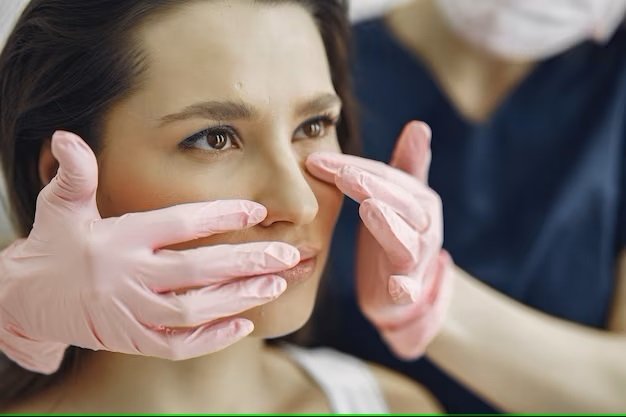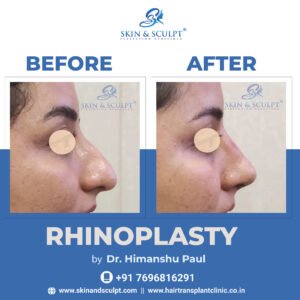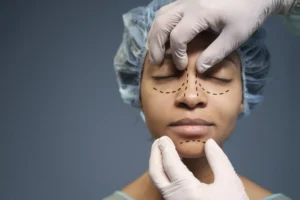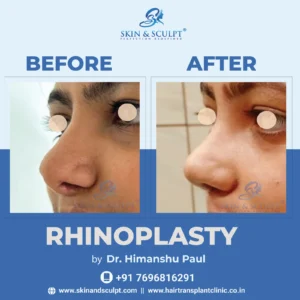Rhinoplasty, commonly known as a “nose job,” is one of the most popular cosmetic surgeries worldwide. It’s a procedure that can not only enhance your facial appearance but also improve your overall self-confidence. Whether you’re considering rhinoplasty for aesthetic reasons or to correct breathing difficulties, it’s essential to be well-informed. This comprehensive guide will walk you through everything you need to know about nose reshaping, from understanding the procedure to post-operative care and potential risks.
What is Rhinoplasty?
Rhinoplasty is a surgical procedure designed to reshape, resize, or improve the functionality of the nose. It can be performed for both aesthetic and functional purposes. Aesthetic rhinoplasty focuses on enhancing the nose’s appearance, while functional rhinoplasty aims to correct breathing difficulties or structural issues.
Why Do People Choose Rhinoplasty?
Different people have different reasons for getting nose reshaping, here in this section we have included some of the common reasons:
- Aesthetic Improvement: Many people seek rhinoplasty to enhance the appearance of their nose, correcting issues like a dorsal hump, crookedness, or a bulbous tip.
- Improved Breathing: Some individuals experience breathing problems due to a deviated septum, nasal valve collapse, or other structural issues that can be addressed through functional rhinoplasty.
- Trauma or Congenital Deformities: In cases of trauma or congenital deformities, rhinoplasty can help restore the nose’s natural appearance and function.
- Boosting Confidence: A successful rhinoplasty can significantly improve self-esteem and overall confidence.
Consultation and Planning
Before undergoing rhinoplasty, you should schedule a consultation with a board-certified plastic surgeon. During this initial meeting, you will discuss your goals and concerns, and your surgeon will assess your nasal anatomy. You are allowed to ask as many questions as you have before going through the procedure, hence make sure to communicate with the expert. Your surgeon will evaluate whether you are a suitable candidate and provide you with information on the potential outcome and risks of the procedure.
The Rhinoplasty Procedure
1. Anesthesia
Rhinoplasty can be performed under either general anaesthesia or local anaesthesia with sedation, depending on the extent of the procedure. Your surgeon will recommend the best option for your case.
2. Incisions
Nose reshaping is typically performed using one of two approaches:
- Closed Rhinoplasty: Involves incisions made inside the nose, which leaves no visible external scars. This approach is suitable for minor to moderate nose modifications.
- Open Rhinoplasty: Requires an external incision across the columella, the strip of tissue separating the nostrils. Although this method leaves a small scar, it provides better access for more extensive nose reshaping.
3. Reshaping the Nose
Once the incisions are made, the surgeon can proceed with reshaping the nose. The bones and cartilage are adjusted to achieve the desired result. Common procedures include reducing the dorsal hump, refining the nasal tip, or straightening a deviated septum.
4. Closing the Incisions
After the necessary modifications are made, the surgeon will close the incisions with dissolvable or removable sutures. If an external incision was used, the scar will be discreet and well-hidden.
5. Recovery and Aftercare
After rhinoplasty, you should expect some downtime. Bruising and swelling are frequent side effects, but they usually go away within a few weeks. You may need to wear a splint or nasal packing for a short period to support the newly-shaped nose. Read some of the common guidelines for smoother recovery:
- Follow Your Surgeon’s Instructions: You will receive detailed post-operative care instructions from your surgeon. For a good recovery, observing these rules is crucial.
- Rest: You should never hurry in the process of healing, make sure to give your body the time it needs to heal. Avoid strenuous activities for several weeks and get plenty of rest.
- Manage Swelling: Cold compresses can help reduce swelling during the initial days of recovery.
- Pain Management: Over-the-counter or prescription pain medications can help manage any discomfort.
- Limit Sun Exposure: Protect your nose from excessive sun exposure to minimize scarring.
- Stay Hydrated: Drinking water is one of the things that you will see as advice everywhere. So, make sure to drink plenty of it as it will help you with the healing process.
- Follow a Proper Diet: Eating a balanced diet rich in nutrients can promote healing.
Risks and Considerations
Like any surgical procedure, rhinoplasty in Chandigarh comes with potential risks, including infection, bleeding, scarring, and dissatisfaction with the results. Choosing a board-certified and experienced surgeon can significantly reduce these risks.
The Final Thoughts
Rhinoplasty can be a life-changing procedure that enhances both the appearance and function of the nose. To ensure the best outcome, thorough research and consultation with a qualified surgeon are crucial. Remember that every individual’s needs and goals are unique, so it’s essential to tailor the procedure to your specific situation. Whether you’re seeking a more balanced facial profile or relief from breathing difficulties, rhinoplasty in Chandigarh can help you achieve the results you desire. Always prioritize your health and well-being throughout the process to ensure a successful and satisfying rhinoplasty experience.




